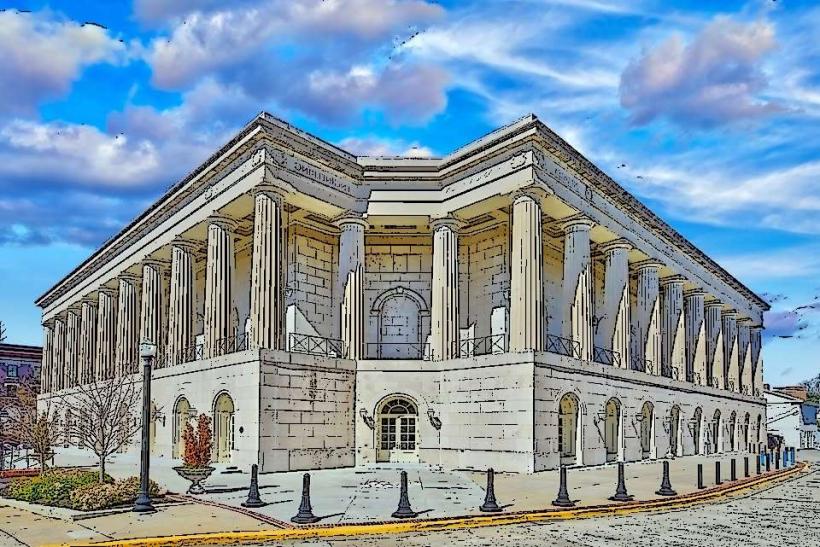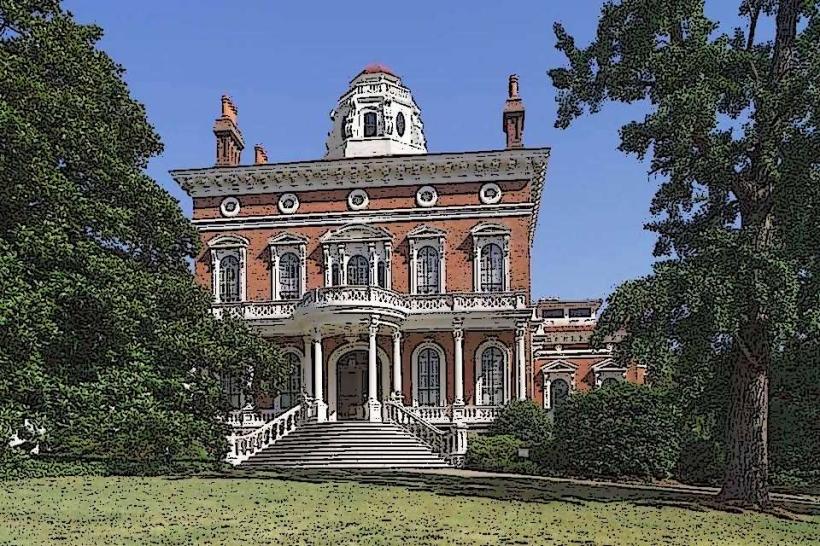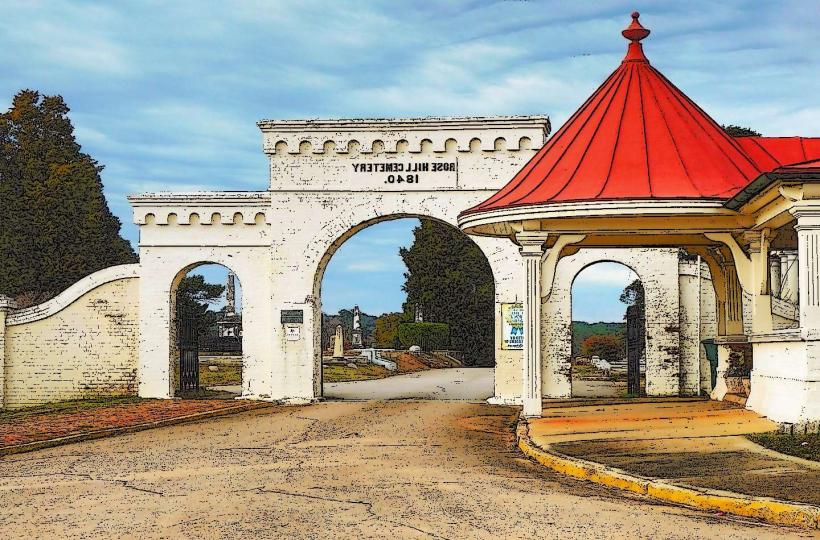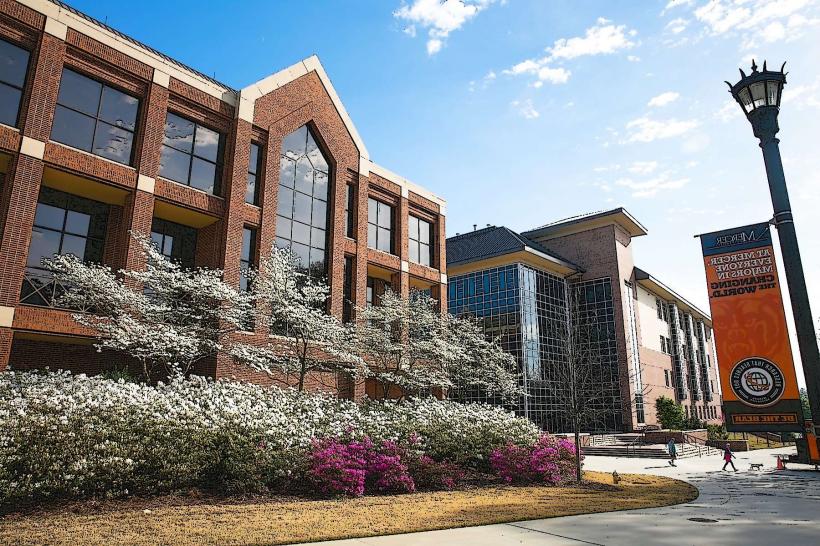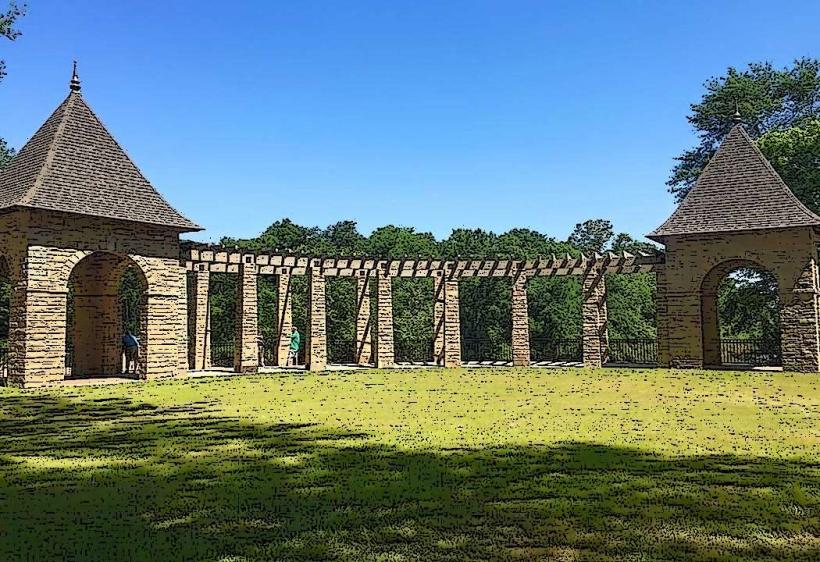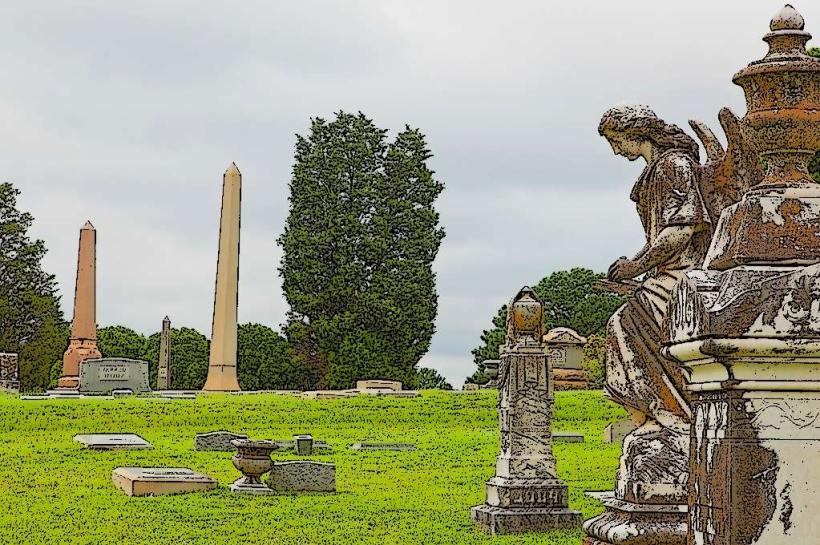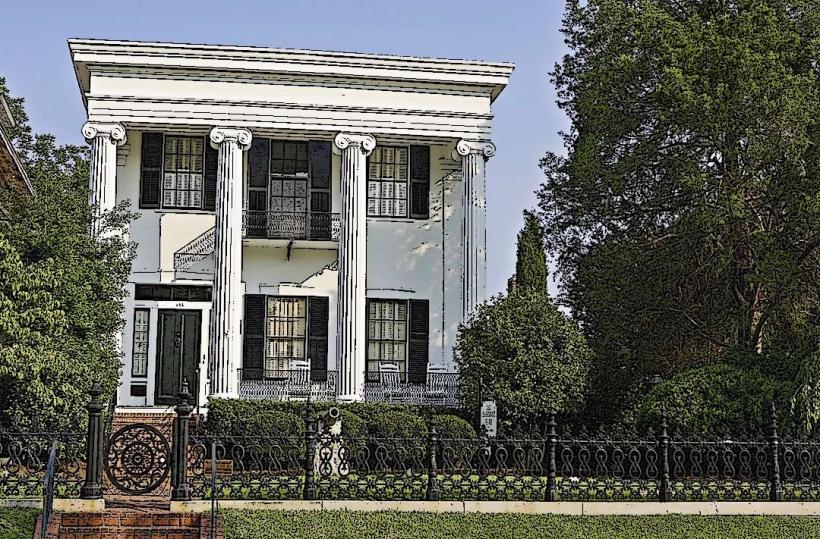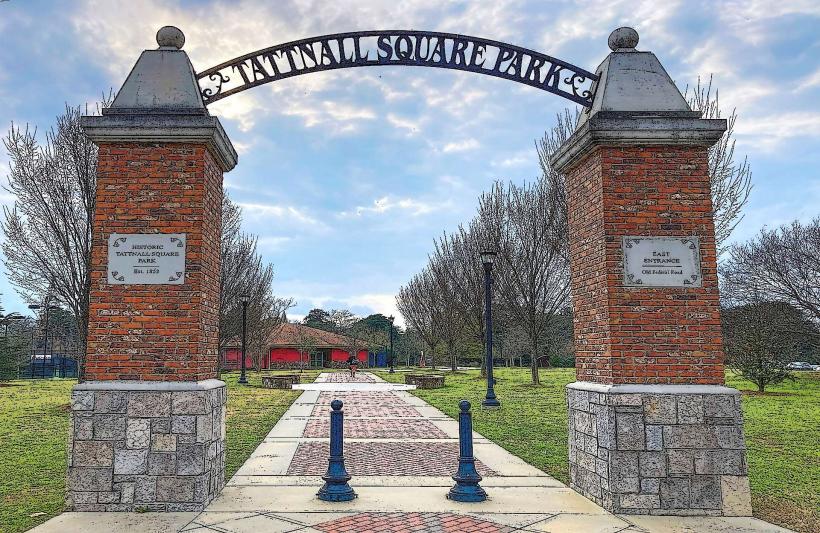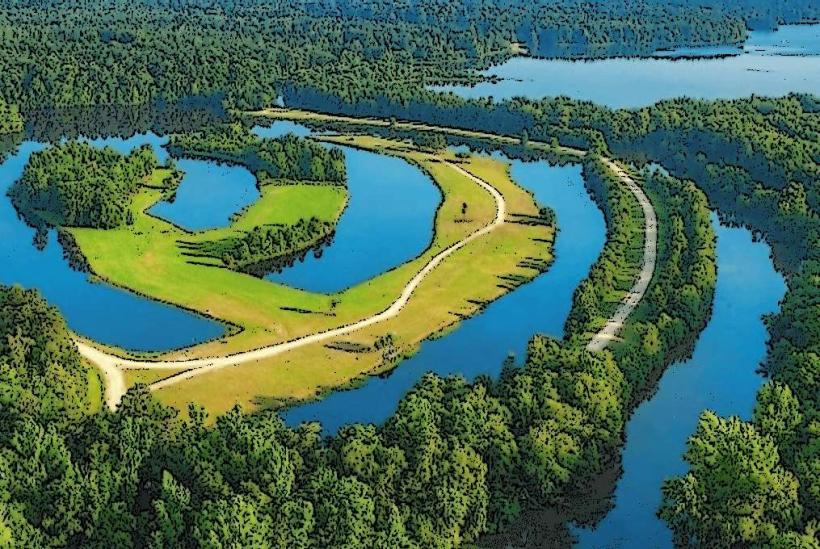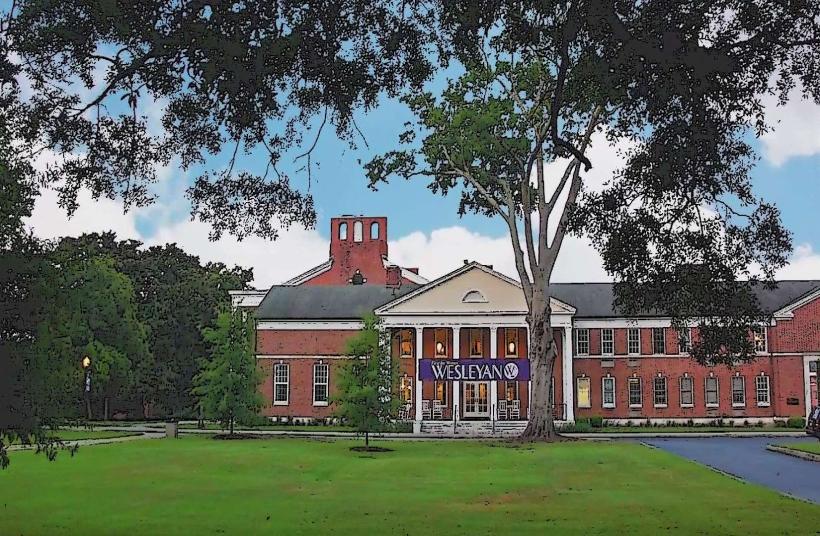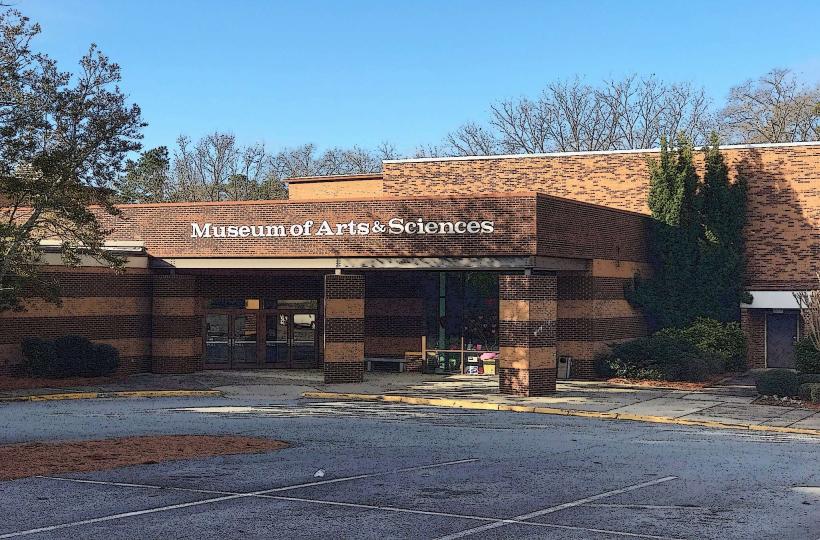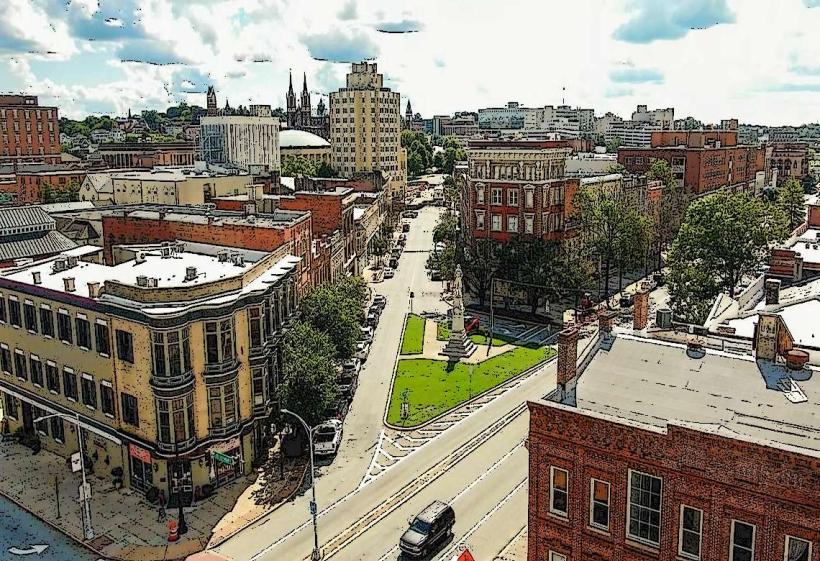Information
Landmark: Ocmulgee Mounds National Historical ParkCity: Macon
Country: USA Georgia
Continent: North America
Ocmulgee Mounds National Historical Park, Macon, USA Georgia, North America
Overview
In Macon, Georgia, Ocmulgee Mounds National Historical Park stretches across a wide, quiet landscape, safeguarding over 12,000 years of Native American history and culture, also the park stretches across about 3,336 acres beside the leisurely, brown waters of the Ocmulgee River, and it’s cared for by the National Park Service under federal protection.Visitors can wander among ancient earthworks, hear the stories of indigenous cultures, and feel the deep heritage that runs through the Southeastern United States, subsequently people have lived at the site since the Paleo-Indian period, about 10,000 BCE-long enough that stone tools from those first inhabitants still turn up in the soil.For thousands of years, this land was home to Native American peoples-from the Archaic and Woodland traditions to the Mississippian culture, whose carved stone tools still turn up in the soil, as a result between roughly 900 and 1100 CE, the Mississippian people built the towering earthen mounds you can still notice in the park, their slopes warm and dusty under the sun.The mounds were places of ceremony, raised platforms for key buildings, and final resting spots where the earth still holds the scent of damp soil, along with at the heart of it all stands the Great Temple Mound, a towering 55-foot rise of packed earth, built from roughly 10 million baskets of soil-each one dumped and leveled by hand.This mound stands as a sign of the intricate social ties and political forces that shaped the Native peoples who raised it, layer by layer under the scorching sun, moreover the Macon Plateau culture, part of the larger Mississippian tradition, took root in the Macon area, where its people built earth mounds and lived along the river’s edge.People knew them for their intricate mound-building, graceful pottery, and rituals lit by the glow of fire, alternatively muscogee (Creek) Nation: Descended from the Mississippian culture, the Muscogee Creek people consider this region sacred, where the wind carries echoes of their ancestors, slightly In their oral histories, the Ocmulgee is “the location where we first sat down,” a spot that anchors their homeland and serves as the heart of their culture, where fire once warmed the evening air, likewise this bond makes the park deeply meaningful, both spiritually and culturally, like a quiet grove where stories linger in the air.Believe it or not, Great Temple Mound, the tallest in the park, rises like a massive wall of packed earth and once held a grand temple or the chief’s home, after that it still stands as a striking symbol of the Mississippian world, capturing both its rigid social order and the ritual gatherings that once echoed through their temple plazas.As it turns out, Smaller mounds ring the Great Temple Mound, some built for burials, others as raised platforms where people once lived, on top of that the earthworks reveal how carefully the ancient settlement was laid out, with ridges and slopes shaped to a precise design.Earth Lodge is a reconstructed ceremonial building in the park, its floor packed hard with clay that’s been there for a thousand years, therefore during guided tours, the lodge lets visitors step into the ceremonial world of the ancient inhabitants, offering a clear, hands-on link to their traditions.The Art Moderne–style visitor center holds a museum with more than 2,000 artifacts, unearthed during digs in the 1930s and afterward, including pieces still dusted with the red clay of the site, while you’ll find pottery, hand-forged tools, and ceremonial objects, along with displays that bring to life the history and culture of the Native peoples who once walked these hills.The park features about eight miles of hiking paths that twist through shady forests, skirt quiet wetlands, and follow the river’s edge, also visitors can wander these trails through a landscape much as it was centuries ago, pausing to take in the quiet woods and understand the setting of the mounds.Every September, the Ocmulgee Indigenous Celebration brings two lively days of Southeastern Native American culture-drums echo through the air, dancers in shining regalia move to the beat, and visitors enjoy traditional food, handmade crafts, and storytelling, moreover it’s a vibrant gathering that celebrates the heritage and keeps alive the traditions of Native peoples tied to the site, from the steady beat of drums to the scent of cedar in the air.During late March’s International Cherry Blossom Festival, visitors join lantern-lit evening walks, climbing the Great Temple Mound as warm light flickers across the path, then the event blends the park’s sweeping views with rich cultural tales, letting you experience it in a way that feels both vivid and unforgettable.All year long, park rangers lead tours, run hands-on workshops, and host special programs that bring Ocmulgee’s rich archaeology and culture to life-sometimes pointing out ancient carvings you might miss on your own, also the park’s grounds and trails welcome visitors every day from 8 a.m, occasionally To 5 p.m, with morning light spilling across the paths as the gates open, equally important you can visit the Earth Lodge and the visitor center any day between 9 a.m. And 5 p.m, unless it’s a major holiday like Thanksgiving, Christmas, or recent Year’s Day, when the doors stay locked and quiet, subsequently you can visit Ocmulgee Mounds National Historical Park for free, though they welcome donations to help preserve the site and fund educational programs-like the guided walks past ancient earth mounds.Accessibility: The park welcomes visitors with disabilities, offering smooth trails you can roll along, restrooms you can reach with ease, and well-designed facilities that make the whole destination feel open to everyone, and the visitor center has restrooms, a modest gift shop, and displays that explain the area’s history.You can park right on site, and getting here from Macon or the nearby towns is a quick, easy drive past rows of tall pines, while ocmulgee Mounds is safeguarded today as a National Historical Park, yet lawmakers are pushing to reclassify it as a National Park and Preserve-an upgrade that would stretch its protected area to roughly 80,000 acres, enough to cover miles of pine forests and riverbanks, in some ways It would become Georgia’s first national park, strengthening conservation efforts, protecting cultural landmarks, and improving tourism facilities like trails and visitor centers, likewise the expansion will safeguard more archaeological sites, along with nearby forests and clear-running streams, helping ensure this one-of-a-kind cultural landscape endures for generations to come, maybe Ocmulgee Mounds National Historical Park ranks among the Southeast’s most significant archaeological and cultural landmarks, telling the story of thousands of years of Indigenous history-layered like the earth beneath your feet, meanwhile towering earthworks, scattered pottery shards, and its ties to the Muscogee Creek Nation offer a vivid window into the lives of ancient Native American civilizations.Ocmulgee draws visitors in with winding trails, a museum, painstakingly rebuilt structures, and lively cultural events, offering a vivid glimpse into Native American heritage and inspiring care for these sacred lands, at the same time the park is still a location to learn and reflect, where towering pines frame trails rich with history and quiet meaning.
Author: Tourist Landmarks
Date: 2025-10-03

